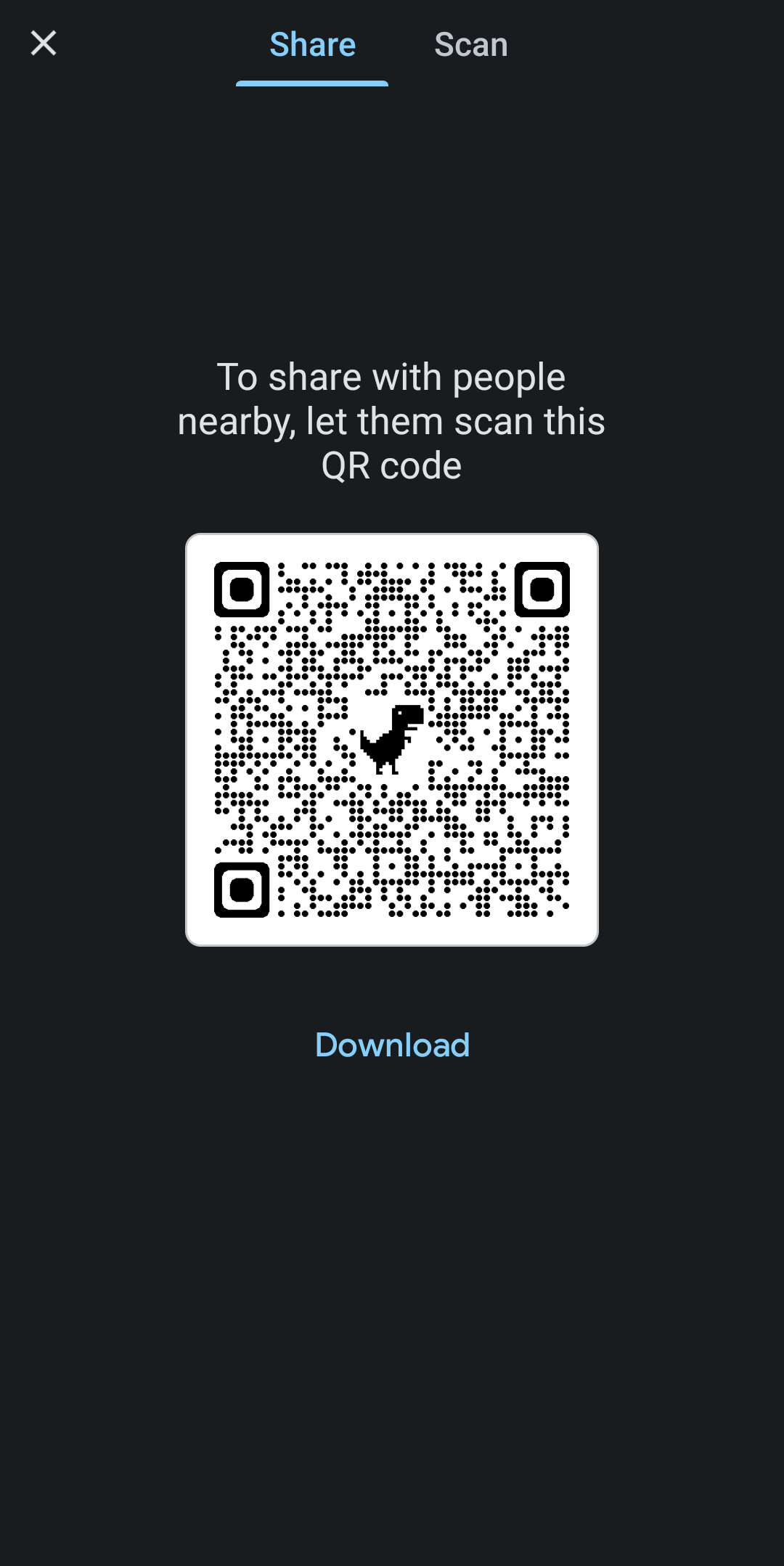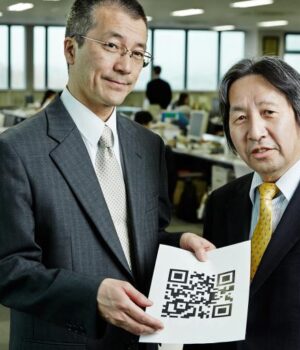The Quick Response Code, often known as the QR Code, is used extensively today. India has become so accustomed to embracing it as a form of electronic payment, especially since the Covid-19 pandemic. This also aligns with our Honorable Prime Minister Narendra Modi ji’s vision of “Cashless India”.
Having been using it in our routine life, we never get curious beyond just transacting money. This blog will help you understand:
- The history of QR Code,
- Its invention in the late 1900s, and
- How to create your own QR Code
QR Code’s History And Invention
By the 1980s, a variety of industries—including manufacturing, distribution, and retail—were using the barcode system. In 1992, Masahiro Hara, a Japanese engineer involved in creating Optical Character Recognition (OCR) systems and barcode scanners at Denso Wave, a division of Toyota Japan that produced automobile parts received requests from industrial facilities to create faster barcode scanners.
The production industry overcame the capacity limitation of the then-current barcode technology by employing several barcodes at once. Each barcode could only hold about 20 alphabetic letters. Hence, the task was less efficient since workers had to scan upto 1,000 barcodes every day.
In an effort to solve the above problem, Masahiro Hara first attempted to meet the industry expectations by enhancing barcode scanners. However, he soon became conscious of the system’s limits. As the products were downsizing, a code that could be printed in a smaller space was a necessity.
Hara quoted, “In the 1990s, due to a shift from mass manufacturing of one type of product to more flexible production, more detailed production control was required at manufacturing sites. And in association with this, developing a barcode that had increased capacity was required”.
He further stated, “We will develop a compact code that can store more information, including kanji and kana characters (Japanese characters and symbols), and at the same time can be read at higher speed”.
Hara was determined to develop a new code system.
The Making Of QR Codes
The development team led by Masahiro Hara began work on a brand-new two-dimensional (2D) coding system with just two members.
Compared to barcodes, 2D codes are harder for scanners to locate. The development team’s biggest challenge was to identify how to get 2D codes read as quickly as possible. One day, Hara came up with the notion that this problem can be solved if location information was included in the code.
A location detecting pattern was developed using this concept and placed at the corners of each code. He believed that by incorporating this pattern into a 2D code, a scanner would be able to quickly and accurately read the code.

Since the pattern was incorrectly detected when a figure with a similar shape was present next to the code, building the position detecting pattern’s shape was extremely difficult. The location detection pattern needed to have a distinct shape in order to prevent false identification. After reducing them to patterns with black and white sections, the development team members started a thorough assessment of the ratio of white-to-black areas in pictures and characters printed on pamphlets, magazines, corrugated cartons, and other materials. They persisted in studying various printed materials day and night until they finally discovered the ratio that did not exist on any printed material. Thus, they came up with the new ratio 1:1:3:1:1.

By determining the lengths of the black and white sections in the position detection pattern, this unique ratio allowed scanners to read the code irrespective of the scanning angle.
The QR Code system, which can store over 7,000 numbers and also has the capacity to encode Kanji characters (Japanese characters), was successfully built after an entire year and a half from the project’s beginning. This code can store a large quantity of data and read at a pace that is more than 10 times faster than other codes.
But this wasn’t the end! QR Codes had several flaws as well. Hara also considered whether the newly designed QR Code could still be read even if it were covered in smudges or had other damage.
He was once again inspired by the surroundings while playing the Japanese board game- ‘Go’ over lunch. Although players were instructed to position their pieces on the grid board’s intersections, he discovered that even if a piece’s placement was slightly incorrect, it was still possible to determine where it should be. This encouraged him that barcode scanners could be able to read damaged square barcodes.

Today, QR codes are renowned for their durability and can be read even when some of them are missing or covered.
Advantages Of Using QR Codes
Two-dimensional (2D) codes were around even before the QR Code system was created. But it has a unique advantage that makes it suitable for use in the field.
QR Codes are resistant to stains and damage, which is advantageous on production sites where oil or other stains might be problematic. Documents traded in production environments frequently have stains from grease and other substances. Scanners cannot read stained barcodes, but because QR Code has an error correcting feature, it can read a code properly even if it is partially stained or absent.
Barcode V/S QR Code
| Sr. No. | Barcode | QR Code |
| A barcode is a way to present data in a graphical, system-readable, and visual format. Computers can easily understand the unique representation of numbers and characters in a barcode, which consists of bars and spaces. | Quick Response (QR) Code is a method of storing data or information so that computers can readily comprehend it and scan it with QR code scanners to retrieve the data. | |
| Barcode was released in 1952. | QR Code was released in 1994. | |
| It was created by Norman Joseph Woodland. | It was created by Masahiro Hara. | |
| Barcodes are mainly preferred to track patient records, purchased goods, airline luggage and more. | QR Code is mainly preferred in cinema halls, supermarkets, or to transmit data. | |
| Barcodes have two types: One-dimensional and two-dimensional. | QR Codes have a single type: two-dimensional. | |
| Barcodes have less data storage. | QR Code has more data storage. | |
| | Barcodes hold the data or information horizontally. | QR Codes hold the data or information both horizontally and vertically. |

Image: QR Code on the left; Barcode on the right
How To Create Your Own QR Code
Making your own QR Code could seem complicated. Yet it isn’t!
The following are the two ways to create your customised QR Code. Once created, the same QR Code may be distributed in your network.
How To Create QR Codes With Chrome/Android
Step 1: Open any link. This link may direct you to any content that you wish to read. For instance, I wish to read my blog on “Task Delegation”.

Step 2: Click on the vertical three dots after you’re done reading it.

Step 3: A vertical window will open displaying multiple options. Click on the “Share” option.

Step 4: A window displaying numerous options to share the link through will now appear. At the bottom, there are different ways to share the blog. Scroll through these options until you come across “QR Code” option. Thereafter, click on the “QR Code” option.


Step 5: A QR Code will be generated for that particular blog. You’ll be given an option to directly share or download it.

Step 6: Click on the download option. That’s the QR Code you created. Share it amongst your network.
Kudos! You’ve created your own QR Code.
Bonus tip: Google Pay (Gpay) application can also be used as a QR Code scanner.
Online QR Code Generator
You may also use an online QR code generator to create a customised QR Code. Simply google the keywords “Online QR Code generator” in Google. You’ll be provided with a range of results. Before proceeding with any application, ensure the legitimacy and integrity of the application.
Furthermore, you can create two types of QR Codes:
Static QR Codes: Data is encoded in a static QR Code just once. The data cannot be changed, deleted, or modified in a static QR Code. For static information (information that doesn’t change with time), static QR codes are used.
Dynamic QR Codes: These QR codes are dynamic. The encoded information may change, be updated, or modified with time. Dynamic QR Codes are used for dynamic information (information that changes with time).







